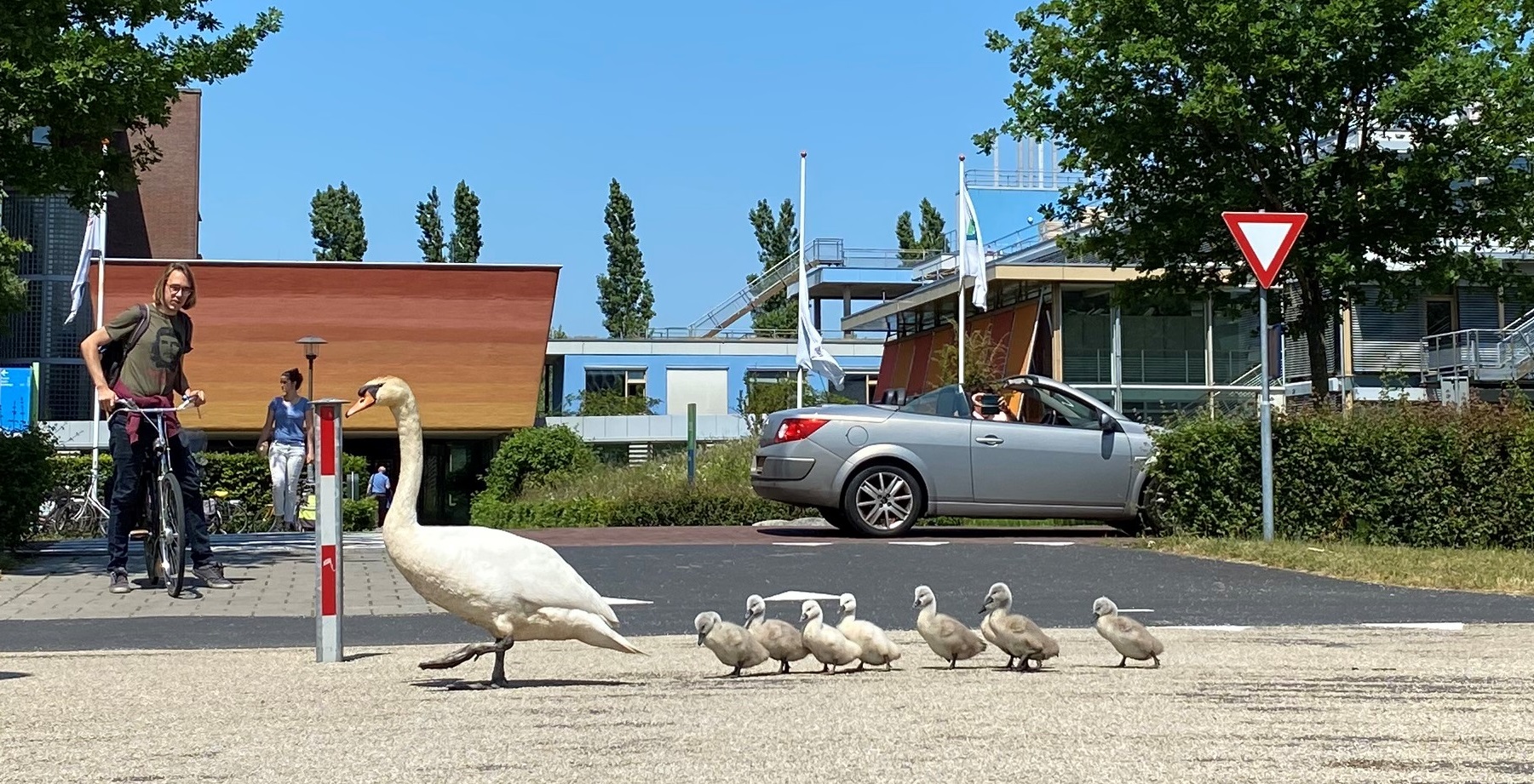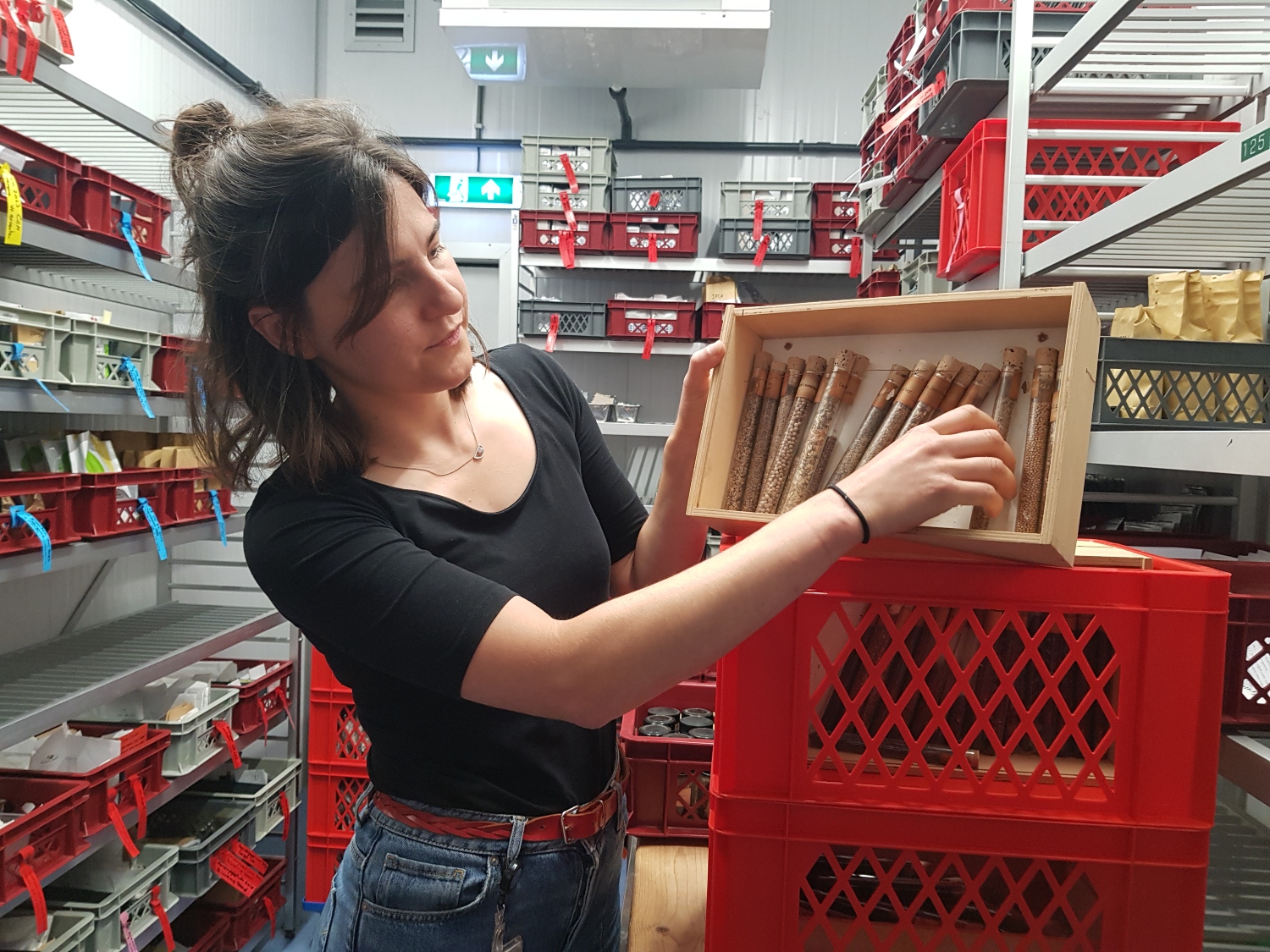Two of the young swans in the family are white rather than grey. This deviation in colour has a somewhat simple genetic cause, says researcher and teacher (Wildlife Ecology and Conservation) Jente Ottenburghs. He studied it and wrote an interesting blog on his channel. The colour white is not only unusual, but it is also not entirely safe.
Ottenburghs saw the differences in colour when he looked down from his practical in Forum and saw the family of swans. ‘The class was quiet, so I immediately went ahead to investigate the reason behind the difference in colour and whether it was a genetic issue.’ Ottenburghs studies hybridisation in birds. He writes a weekly blog on new papers that have been published in his domain. He has written over 500 blogs so far.
Mendel
There appears to be a genetic reason. Ornithologists determined, as early as 1968, that the ratio of white to grey offspring can be easily explained by Mendel’s laws of genetics. ‘Grey is the dominant gene. Moreover, the white youngsters are frequently female, which suggests that the colour gene is most likely located on one of the sex chromosomes.’
Studies show that parents are more aggressive towards their white offspring
Jente Ottenburghs, Wildlife Ecology and Conservation
The difference in colour is not without consequence. ‘White chicks have a lower survival rate’, says Ottenburghs. ‘The difference becomes most apparent in their second year. Studies show that parents are more aggressive towards their white offspring. By this time, the white youngsters look suspiciously similar to an adult swan, causing the swans to chase them away. In that stage, the grey offspring have become brown and are accepted.’
Ditch
Swans that leave the nest at a tender age are at a disadvantage. Whether this fate will befall de campus swans remains to be seen. The fact that all eight chicks are still alive is already quite something. In previous years, many young swans were killed by a pike in the Forum Pond. This year, the parents nested in the Orion Pond, and the family is currently seen mostly in the ditch along the Droevendaalsesteeg.


![[Seriously?] The Gulf of WUR](https://www.resource-online.nl/app/uploads/2025/02/WEB_DeNeus.png)


This article is very interesting!!
Watching baby swans grow every day was my only zen moment during the summer resit period. We should protect these animals at all costs.